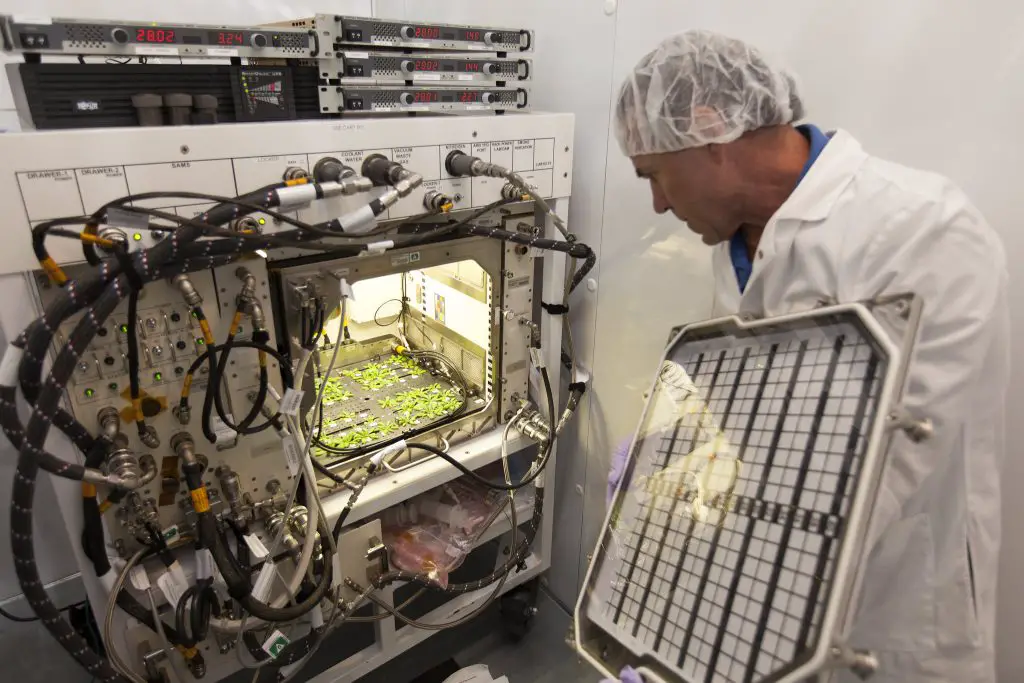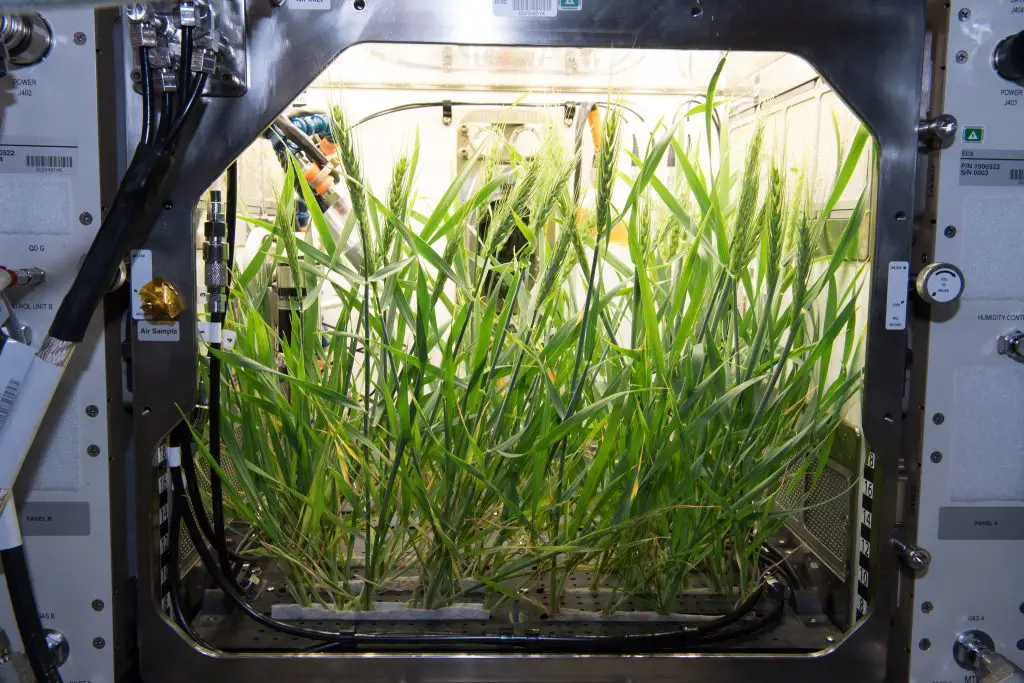Yes, you can leave your banana plant outside, as long as the weather conditions are suitable for its growth. A banana plant thrives in warm temperatures, typically between 75°f and 95°f (24°c to 35°c), and requires direct sunlight and high humidity.
If you live in a region with a tropical or subtropical climate, it’s ideal to keep your banana plant outside. However, if you live in a colder climate, it’s advisable to bring the plant indoors during winter or provide protection from frost and freezing temperatures.
Additionally, ensure that the soil is well-drained and water the plant regularly to keep it healthy. By following these guidelines, you can enjoy a thriving banana plant in your outdoor space.

Credit: www.bybrittanygoldwyn.com
Factors To Consider Before Leaving Your Banana Plant Outside
Banana plants are a popular addition to gardens and outdoor spaces due to their lush foliage and tropical appeal. However, before leaving your banana plant outside, there are several important factors you should consider. By understanding these factors, you can ensure the health and well-being of your banana plant, allowing it to thrive in its outdoor environment.
Climate And Temperature
- Banana plants thrive in tropical and subtropical climates.
- They require warm temperatures year-round to flourish.
- Temperatures below 50°f (10°c) can stunt growth or lead to plant damage.
Frost And Freezing
- Banana plants are highly susceptible to frost damage.
- A single frost can kill the plant or cause severe damage.
- Consider the frost dates in your area and protect your plant accordingly.
Heat And Sun Exposure
- Banana plants require full sun exposure to grow and produce fruit.
- They need at least 6 to 8 hours of direct sunlight each day.
- However, excessive heat can cause sunburn or scorch the leaves.
Location And Position
- Choose a location that provides ample space for the banana plant to grow.
- Consider the plant’s mature size, as it can reach heights of 10 to 20 feet.
- Position the plant away from structures or other plants that may obstruct its growth.
Sunlight And Shade
- Ensure that the banana plant receives sufficient sunlight.
- Avoid planting it in areas with excessive shade, as this can hinder growth.
- However, some shade during the hottest part of the day can help protect the plant.
Wind And Shelter
- Strong winds can damage the delicate leaves of a banana plant.
- Provide shelter or windbreaks to protect the plant from strong gusts.
- Planting near a wall, fence, or other structures can help create a natural wind barrier.
Soil And Drainage
- Banana plants prefer well-draining soil to prevent waterlogged roots.
- Ensure that the soil is loamy and rich in organic matter.
- Amend heavy clay or sandy soils with compost or peat moss.
Protection And Maintenance
- Regularly check for pests and disease on your banana plant.
- Treat any issues promptly to prevent further damage.
- Protect the plant from harsh weather conditions and provide adequate support.
Mulching And Insulation
- Apply a layer of mulch around the base of the banana plant.
- This helps to retain moisture and regulate soil temperature.
- Consider adding additional insulation during colder months.
Watering And Irrigation
- Banana plants require regular watering to keep the soil consistently moist.
- Water deeply and avoid overwatering, which can lead to root rot.
- Monitor soil moisture levels and adjust watering accordingly.
Pruning And Trimming
- Regularly prune your banana plant to remove dead or damaged leaves.
- Pruning also helps to maintain the overall shape and aesthetics of the plant.
- Remove any suckers or offshoots to prevent overcrowding.
Pest And Disease Control
- Keep a close eye on common pests like aphids, mealybugs, and thrips.
- Treat infestations promptly using organic or chemical methods.
- Monitor for any signs of diseases such as panama disease or leaf spot.
By considering these factors before leaving your banana plant outside, you can create an ideal environment for your plant to thrive. Remember to regularly monitor its health and make any necessary adjustments to ensure its long-term success.
Benefits Of Leaving Your Banana Plant Outside
Have you ever wondered if it’s safe to leave your banana plant outside? Well, you’re in luck because in this blog post, we will be discussing the benefits of leaving your banana plant outside. Whether you’re a seasoned gardener or a beginner, this information will be helpful in understanding why outdoor placement can be advantageous for your banana plant’s growth and overall health.
Natural Sunlight And Air Circulation
- Banana plants thrive in natural sunlight, allowing them to absorb the necessary energy for photosynthesis, which is vital for their growth.
- Outdoor placement provides abundant sunlight, ensuring your banana plant receives the optimal amount of light to support its development.
- Additionally, the open air circulation outside is beneficial for the plant’s health, preventing the buildup of excess moisture and reducing the risk of fungal diseases.
Photosynthesis And Growth
- Outdoor placement facilitates photosynthesis, enabling your banana plant to convert sunlight into energy, promoting healthy growth.
- Ample sunlight exposure enhances the plant’s ability to produce glucose and other essential nutrients, ensuring it develops robust foliage and strong stems.
Strong And Healthy Stems And Leaves
- The combination of natural sunlight, fresh air, and outdoor living conditions promotes the production of vigorous stems and lush green leaves.
- Exposure to elements like wind and rain helps strengthen the plant’s structure, making it less prone to damage from external factors.
Enhanced Flowering And Fruit Production
- Leaving your banana plant outside can have a positive impact on its blooming and fruiting capabilities.
- Outdoor conditions stimulate the plant’s natural processes, encouraging the growth of flowers that eventually lead to the development of delicious bananas.
Space Efficiency And Aesthetic Appeal
- Outdoor placement allows your banana plant to interact with its surroundings, creating a wonderful visual appeal in your garden or landscape.
- Utilizing the outdoor space efficiently ensures your plant has ample room to grow without compromising the aesthetics of your outdoor area.
Landscaping And Garden Design
- Incorporating banana plants into your landscape design can add a tropical and exotic touch to your garden.
- Their tall and broad leaves provide a beautiful contrast against other plants and flowers, enhancing the overall appeal of your outdoor space.
Vertical Gardening And Space Optimization
- With their upright growth habit, banana plants are perfect for vertical gardening, maximizing your space utilization.
- By planting your banana plant outdoors, you can create stunning vertical gardens, transforming bare walls or fences into lush greenery.
Cost Savings And Reduced Effort
- By leaving your banana plant outside, you can save money on expensive indoor gardening equipment and artificial lighting.
- Outdoor gardening requires less maintenance and effort, as the plant is exposed to natural elements that support its growth.
No Need For Indoor Space Or Containers
- Opting for outdoor placement eliminates the need for indoor space or containers, freeing up valuable room inside your home.
- Your banana plant can flourish in its natural habitat, contributing to a clutter-free and spacious living environment.
Minimal Repotting And Transplanting
- Outdoor placement reduces the need for frequent repotting and transplanting, as the plant has sufficient space to spread its roots.
- This offers convenience and saves time, allowing you to focus on other aspects of your gardening endeavors.
Leaving your banana plant outside not only benefits its growth and development but also adds charm and beauty to your outdoor space. Harnessing the power of natural sunlight, fresh air circulation, and optimum growing conditions, your banana plant can thrive outdoors, bringing a touch of the tropics to your garden.
Embrace the benefits of outdoor living for your beloved banana plant and watch it flourish in all its vibrant glory.
Risks And Challenges Of Leaving Your Banana Plant Outside
Have you ever wondered if it’s safe to leave your banana plant outside? While banana plants are well-known for their tropical origins, there are risks and challenges associated with exposing them to the outdoor elements. In this section, we will explore the potential issues that can arise from keeping your banana plant outdoors, including cold weather and frost damage, sunburn and heat stress, as well as pests and diseases.
By understanding these risks, you can take the necessary precautions to ensure the health and longevity of your beloved banana plant. So, let’s dive in and explore the challenges that come with leaving your banana plant outside.
Cold Weather And Frost Damage:
- Banana plants are highly sensitive to cold weather and frost.
- Exposure to temperatures below 50°f (10°c) can cause significant damage to the plant.
- Frost can kill the leaves, stems, and even the entire plant if left unprotected.
Protecting Against Frost And Freezing:
- Cover the plant with a frost cloth or blanket to provide insulation and protect it from freezing temperatures.
- Use mulch or straw around the base of the plant to provide additional protection against cold air.
- Consider relocating potted banana plants indoors or to a sheltered area during the winter months.
Symptoms Of Cold Stress:
- Yellowing or browning of leaves.
- Leaf curling or wilting.
- Blackening or browning of stem or trunk.
- Stunted growth or complete plant death.
Recovery And Remedial Measures:
- If your banana plant suffers from frost or cold damage, there may still be hope for recovery.
- Remove any damaged or dead foliage or stems.
- Provide extra care, including proper watering and fertilization, to help the plant regain its vigor.
- It may take several months for the plant to fully recover, so be patient and monitor its progress.
Sunburn And Heat Stress:
- Banana plants thrive in warm climates but can suffer from sunburn and heat stress if exposed to intense sunlight and high temperatures.
- Direct sunlight can cause scorching and discoloration of leaves.
Preventing Heat Stress And Sunburn:
- Provide shade to your banana plant during the hottest hours of the day.
- Use shade cloths or umbrella covers to protect the plant from direct sunlight.
- Regularly check the soil moisture and ensure adequate watering to prevent dehydration.
Symptoms Of Heat Damage:
- Brown or yellow patches on leaves.
- Wilting or drooping foliage.
- Leaf curling or twisting.
Mitigation And Treatment Strategies:
- Move the plant to a more shaded area to reduce sun exposure.
- Increase watering during hot and dry periods to maintain adequate moisture levels.
- Apply a light misting of water to cool down the plant during heatwaves.
Pests And Diseases:
- Banana plants are susceptible to various pests and diseases when left outside.
- Common outdoor pest infestations include aphids, spider mites, and caterpillars.
Identifying And Managing Pest Issues:
- Regularly inspect the plant for signs of pest infestation, such as small insects, webbing, or chewed leaves.
- If pests are detected, use organic pest control methods or consult a professional for appropriate treatment.
Fungal And Bacterial Diseases:
- Banana plants are vulnerable to diseases like panama disease, banana wilt, and black sigatoka.
- Symptoms include leaf spotting, wilting, and fruit rot.
Remember, understanding and addressing the risks and challenges of leaving your banana plant outside are crucial for its well-being. By taking the necessary precautions, you can enjoy the beauty and allure of a thriving banana plant in your outdoor space.
Frequently Asked Questions On Can I Leave My Banana Plant Outside
Can Banana Plants Survive Outside In Cold Weather?
Yes, banana plants can survive outside in cold weather, but only if the temperature doesn’t drop below freezing. They are tropical plants that thrive in warm climates, so it’s best to bring them indoors or provide protection if frost is expected.
How Much Sunlight Does A Banana Plant Need?
Banana plants thrive in full sunlight and require at least 6 to 8 hours of direct sunlight per day. Without enough sunlight, the plant’s growth may be stunted, and it might not produce fruit.
Can I Leave My Banana Plant Outside During The Summer?
Yes, you can leave your banana plant outside during the summer, as long as the temperature remains warm and there are no frost risks. Just ensure that it receives ample sunlight, regular watering, and protection from strong winds.
What Is The Ideal Temperature Range For Banana Plants?
Banana plants prefer temperatures between 75°f (24°c) and 95°f (35°c). They can tolerate temperatures as low as 50°f (10°c) but may suffer damage if exposed to temperatures below freezing.
Can I Plant A Banana Plant Directly In The Ground?
Yes, you can plant a banana plant directly in the ground, especially in areas with warm climates. Ensure the soil is well-draining, add organic matter like compost, and provide a location with enough space for the plant to grow and spread its leaves.
How Often Should I Water My Banana Plant?
Banana plants require regular watering to keep the soil moist but not overly saturated. Water the plant deeply once or twice a week, depending on the weather conditions and moisture retention of the soil. Avoid letting the soil dry out completely between waterings.
Conclusion
Keeping your banana plant outside can be a viable option if you live in a warm and tropical climate. The plant thrives in direct sunlight and humid conditions, making it well-suited for outdoor environments. However, it is crucial to consider the temperature and weather patterns in your region.
Banana plants are sensitive to cold temperatures and frost, which can lead to damage or even death of the plant. Therefore, it may be necessary to bring your banana plant indoors or provide some form of protection during colder months.
Additionally, consider the size and potential growth of your banana plant. If it becomes too large for your outdoor space, it may require transplanting or pruning to maintain a manageable size. Overall, by understanding your specific climate and taking necessary precautions, you can enjoy the beauty and benefits of your banana plant in an outdoor setting.



